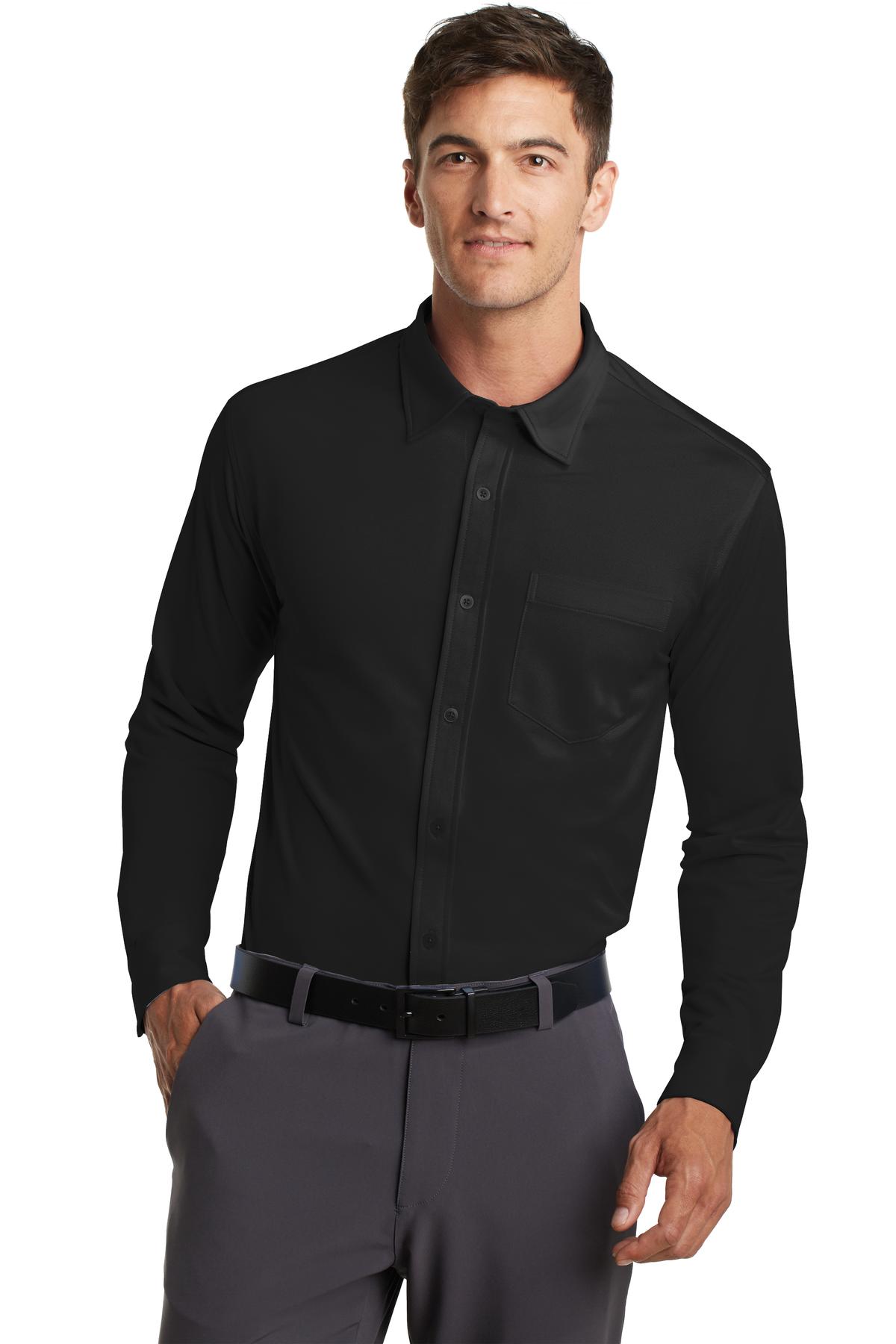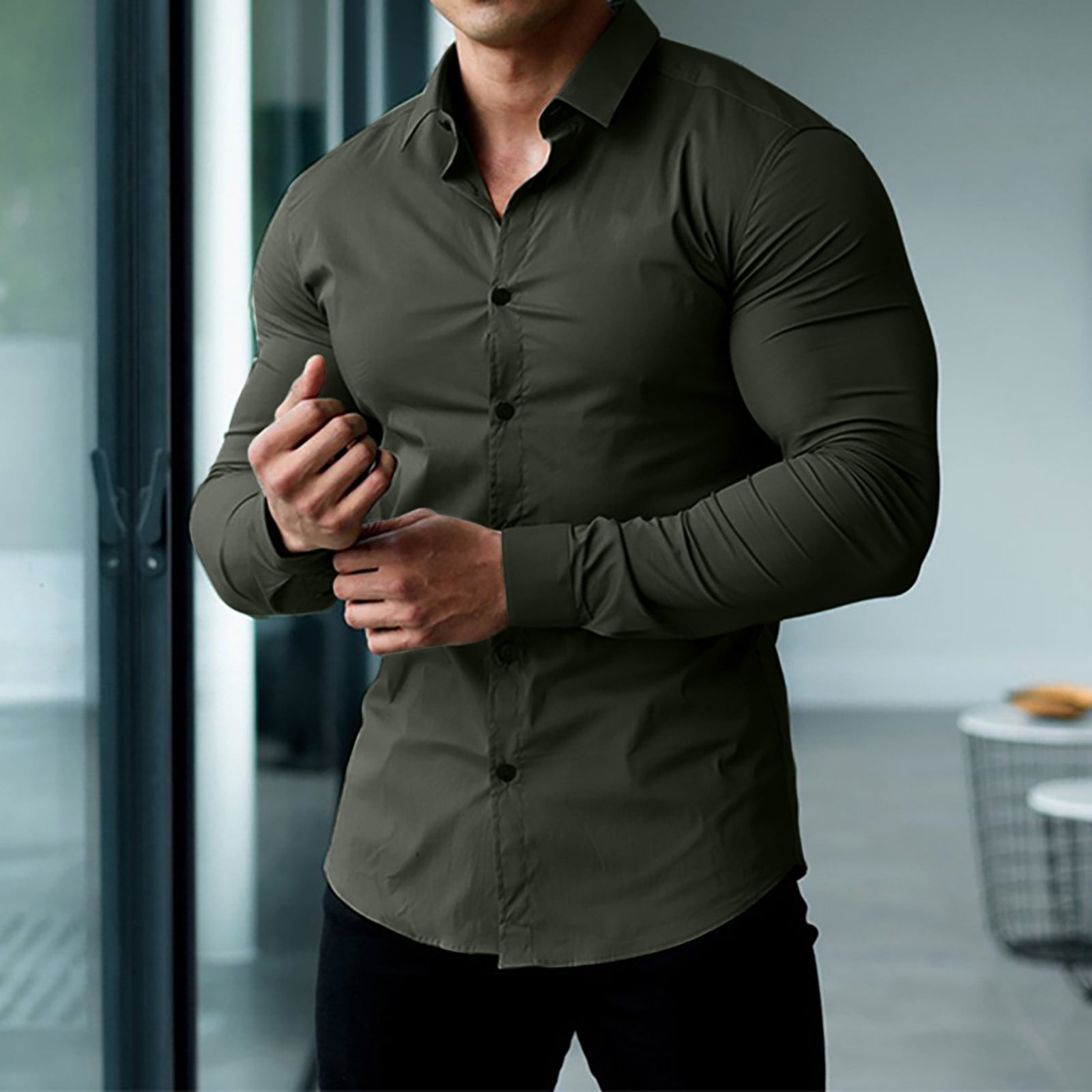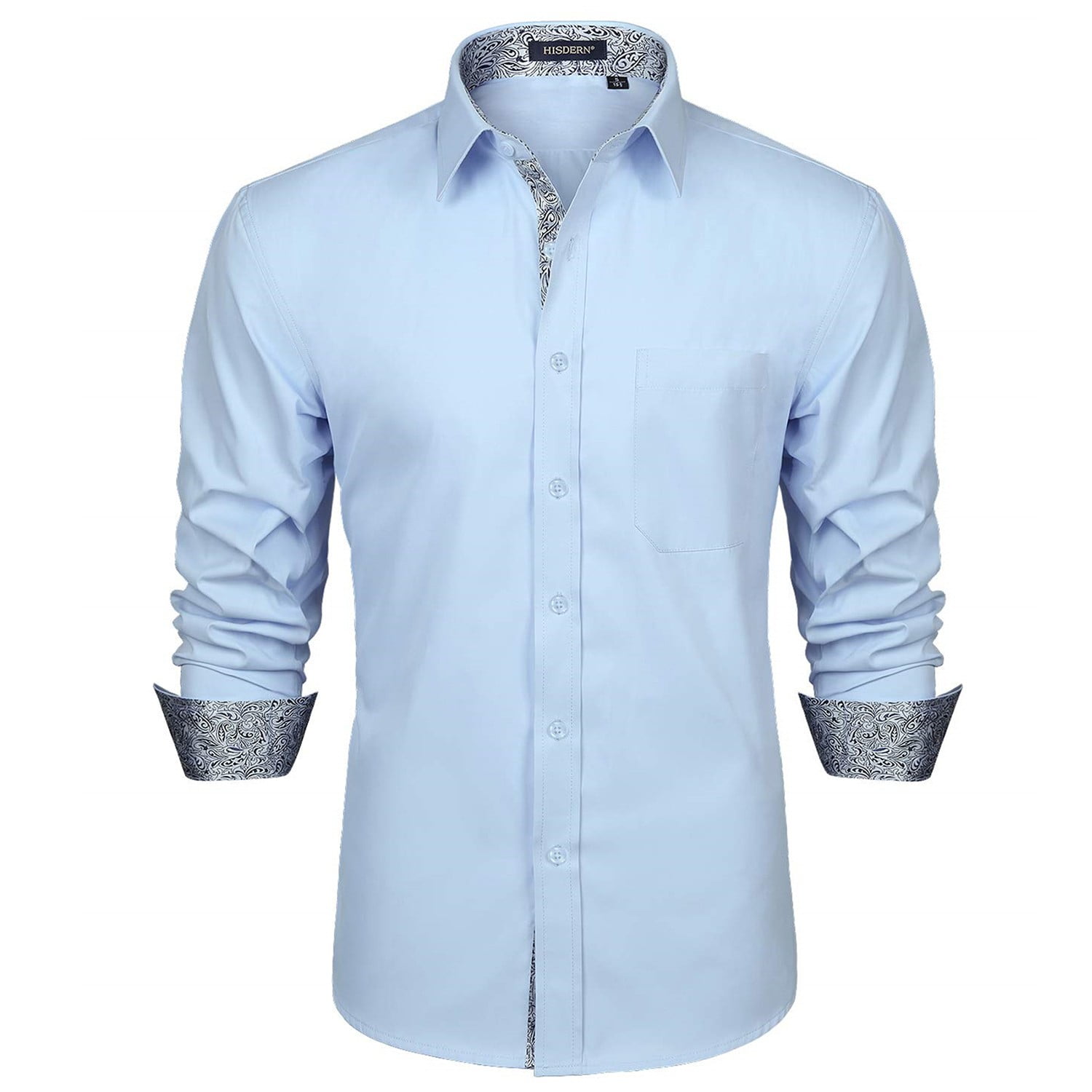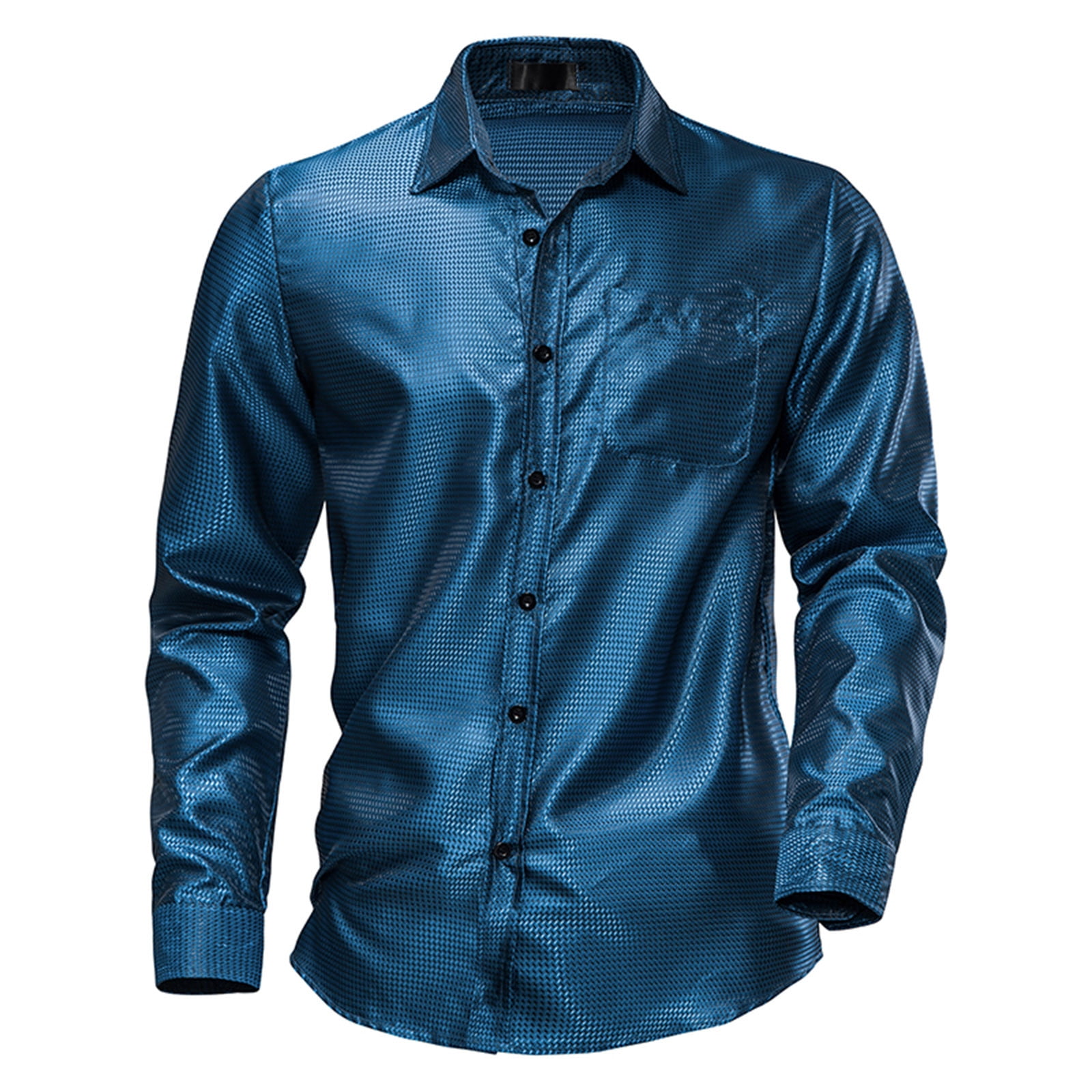How to measure for a dress shirt? Finding the perfect fit for a dress shirt is crucial for achieving a polished and stylish look. While ready-to-wear shirts come in standard sizes, the most accurate way to ensure a well-fitted dress shirt is to take proper measurements. In this guide, we will provide a step-by-step approach to measuring for a dress shirt, including neck size, chest size, waist size, and sleeve length. By following these instructions, you can confidently obtain accurate measurements that will help you choose the right size or opt for custom-tailored dress shirts that provide a comfortable and flattering fit.

Neck Size:
-
Use a Measuring Tape:
- Begin by standing upright and aligning your head naturally.
- Wrap the measuring tape around the base of your neck, slightly below your Adam’s apple, where your collar usually rests.
-
Snug and Comfortable Fit:
- Ensure that the measuring tape is snug around your neck without being too tight or loose.
- Keep one finger between the tape and your neck to allow for some breathing room.
Chest Size:
-
Stand Up Straight:
- Stand upright with your arms at your sides and your chest out naturally.
- Relax your shoulders to obtain accurate chest measurements.
-
Use a Measuring Tape:
- Wrap the measuring tape around the fullest part of your chest, which is typically across the nipple line.
- Keep the tape parallel to the ground and make sure it doesn’t dig into your skin or constrict your breathing.
Waist Size:
-
Find Your Natural Waistline:
- Locate your natural waistline by bending slightly to one side.
- Place your hands on your hips, and where your fingers rest is usually your natural waistline.
-
Measure Your Waist:
- Wrap the measuring tape around your waist, just above your hip bones, where your pants normally sit.
- Ensure the tape is snug but comfortable, without squeezing too tightly or leaving extra space.

Sleeve Length:
-
Position Your Arm:
- Stand with your arm relaxed at your side, as if you were standing naturally.
- Bend your arm slightly at the elbow to create a right angle.
-
Measure From the Middle of Your Back:
- Start measuring from the center of your back, at the base of your neck, where your collar usually rests.
- Follow the outer part of your shoulder and trace down to the edge of your wrist or wherever you prefer the sleeve to end.
-
Account for Movement:
- To ensure freedom of movement, add an additional half inch or one inch to your measurement.
- This extra allowance allows for proper arm movement without the sleeves being too short when reaching forward.
How to match dress shirt with good-looking clothes
A dress shirt is a versatile piece of clothing that can be dressed up or down to suit various occasions. Whether you’re heading to the office, attending a formal event, or enjoying a night out, mastering the art of styling dress shirts can elevate your overall look.

Dress Shirts with Trousers:
-
Classic Suit Trousers:
- Pair a crisp, white dress shirt with tailored suit trousers in a complementary color.
- Opt for a slim or fitted cut to create a refined and polished appearance.
-
Chinos or Khakis:
- Style a pastel or patterned dress shirt with chinos or khaki trousers for a more casual yet sophisticated look.
- Roll up the sleeves and complete the outfit with loafers or brogues to maintain a relaxed yet put-together style.
Dress Shirts with Suits:
-
Classic Matching Suit:
- Opt for a monochromatic look by combining a dress shirt with a matching suit in the same color or pattern.
- Experiment with different shades or textures to add depth and visual interest to the outfit.
-
Contrasting Blazers:
- Pair a solid-colored dress shirt with a blazer in a different shade or pattern.
- Choose a blazer color that complements the dress shirt, creating a stylish contrast and adding a touch of sophistication.
Dress Shirts with Jeans:
-
Casual Button-Down Look:
- Pair a checked or patterned dress shirt for travel with dark-wash jeans for a stylish and laid-back ensemble.
- Roll up the sleeves and add a leather belt to complete the casual yet refined look.
-
Dressy Denim Ensemble:
- Combine a high-quality dress shirt with premium jeans in a dark indigo wash for a more polished and sophisticated outfit.
- Accessorize with a sleek belt, watch, and leather shoes to elevate the overall appearance.
Accessorizing Dress Shirts:
-
Ties and Bow Ties:
- Enhance the elegance of a dress shirt by adding a tie or bow tie.
- Match the color or pattern of the tie with the dress shirt for a cohesive and refined look.
-
Pocket Squares:
- Add a touch of flair to your dress shirt by incorporating a pocket square.
- Experiment with different folds and colors that complement the shirt or tie for a stylish and dapper finish.
-
Statement Cufflinks:
- Elevate your dress shirt by accessorizing with statement cufflinks.
- Choose cufflinks with unique designs or personal significance to add a touch of personality and style to your outfit.

Dress Shirts for Specific Occasions:
-
Formal Events:
- Pair a crisp white dress shirt with a black tuxedo, a bow tie, and a pocket square for a classic and sophisticated formal look.
-
Business Casual:
- Combine a light-colored comfort colors shirt with tailored separates, such as a blazer, dress trousers, and loafers.
- Opt for softer fabrics and patterns to maintain a professional yet relaxed appearance.
Styling dress shirts successfully involves understanding how they can be paired with various clothing items and accessories. From combining dress shirts with trousers or suits for a classic and polished look to creating a stylish and casual ensemble with jeans, there are endless possibilities for fashionable outfits. By accessorizing with ties, pocket squares, and statement cufflinks, you can add a touch of personality and sophistication to your dress shirt ensembles.
Conclusion:
Measuring for a dress shirt is essential for achieving a comfortable and well-fitted garment. By following this step-by-step guide, you can accurately measure your neck size, chest size, waist size, and sleeve length. Whether you’re choosing a standard size or opting for custom-tailored dress shirts, these measurements will help you find the perfect fit. Remember that fit preferences may vary, and it’s important to consider personal comfort levels when deciding on the final measurements. By investing time in accurate measurements, you can confidently choose dress shirts that enhance your style, flatter your body, and provide optimal comfort for a polished and confident look.

